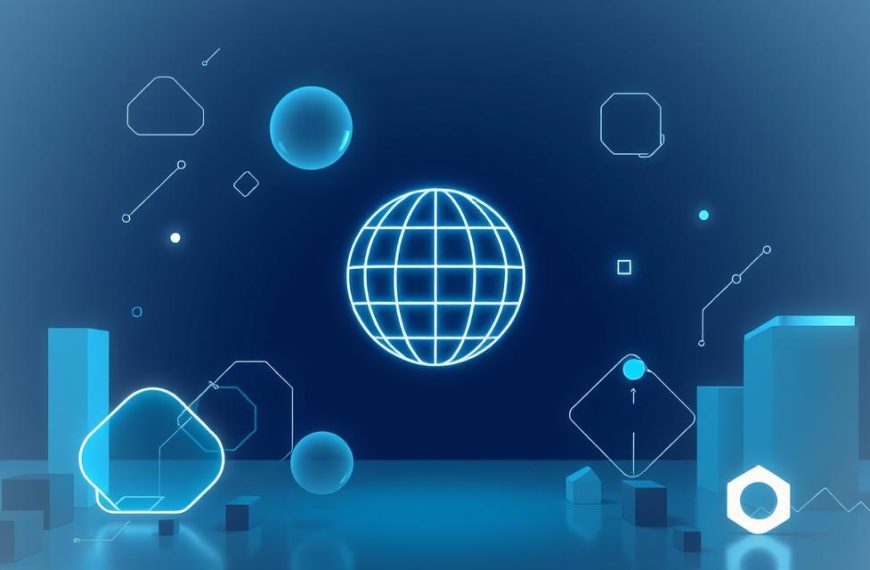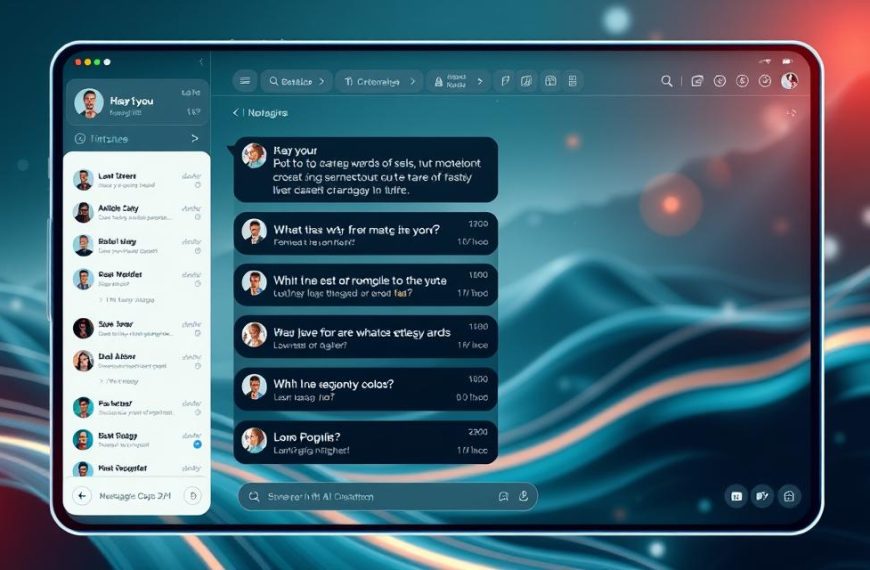Modern enterprises rely on advanced tools to stay competitive. Among these, artificial intelligence stands out as a game-changer. Research from Frost & Sullivan reveals that 89% of companies expect AI to boost revenue, streamline operations, and enhance customer experiences.
Adoption rates have skyrocketed in recent years. McKinsey reports a 100% increase in corporate AI usage since 2017. Over 60% of firms plan further investments, signaling lasting momentum.
Core capabilities like machine learning and natural language processing drive this transformation. From predictive analytics to automated workflows, these technologies reshape how organizations operate. Leaders who embrace them gain measurable advantages in efficiency and innovation.
This article explores key trends and real-world implementations. Discover how forward-thinking companies leverage smart systems for sustainable growth.
1. AI Enhances Efficiency and Productivity in Business Operations
Cutting-edge solutions now redefine workplace productivity benchmarks. By integrating artificial intelligence, companies automate tedious workflows and accelerate decision cycles. Microsoft’s Work Trend Index reveals AI handles 73% of repetitive data tasks, freeing employees for strategic work.
Automating Repetitive Tasks
Robotic Process Automation (RPA) combined with AI slashes errors by 72%, per KPMG. JPMorgan’s COiN platform exemplifies this—processing 12,000 documents annually, equivalent to 360,000 human hours. UiPath similarly reduces invoice processing from days to hours.
Generative AI further transforms content creation, projected to craft 30% of marketing materials by 2025 (Gartner). This shift allows teams to focus on creativity over manual drafting.
Streamlining IT Operations with AIOps
IBM’s watsonx.ai demonstrates AIOps’ power, cutting incident resolution time by 50–90%. Traditional methods struggle with reactive fixes, while AI predicts failures through machine learning.
| Metric | Traditional IT | AI-Powered IT |
|---|---|---|
| Incident Resolution | Hours–Days | Minutes–Hours |
| Error Rate | High | Low (72% reduction) |
| Scalability | Limited | Real-time adjustments |
Such advancements optimize end-to-end processes, ensuring seamless operations. Enterprises adopting these tools outperform peers in agility and cost savings.
2. AI Empowers Data-Driven Decision Making
Smart algorithms now decode complex patterns, driving smarter choices. MIT Sloan research shows AI-powered analysis boosts decision accuracy by 40%. From retail to finance, leaders harness these tools to predict trends and optimize outcomes.
Machine Learning for Predictive Analytics
Target’s machine learning models famously predict customer life events, like pregnancy timelines, with 85% accuracy. Similarly, Amazon’s anticipatory shipping patents analyze browsing history to pre-position inventory.
IBM’s supply chain study highlights a 35% drop in stockouts using predictive systems. Deloitte adds that 71% of executives see sharper forecasting with machine learning.
Real-Time Insights for Strategic Planning
Walmart’s 2.5-petabyte data lake processes millions of transactions hourly. This fuels dynamic inventory adjustments, slashing overstock costs by 15%.
Salesforce Einstein delivers pipeline predictions, helping sales teams prioritize high-value leads. Unilever achieves 98% forecast accuracy with Blue Yonder AI, minimizing waste.
“Real-time insights separate winners from followers in volatile markets.”
3. Why Is Artificial Intelligence Important to Business Applications of Technology?
Adaptive systems reshape industries with tailored capabilities. Accenture reports 78% of enterprises now deploy custom AI models, proving one-size-fits-all approaches no longer suffice. From healthcare diagnostics to retail personalization, solutions align with unique operational demands.
Customizable Solutions for Unique Business Needs
PathAI’s diagnostic tools analyze medical images with 95% accuracy, aiding pathologists. Meanwhile, Stitch Fix uses machine learning to curate fashion selections, boosting sales by 25%. These examples highlight how systems adapt to sector-specific requirements.
Salesforce Einstein tailors CRM workflows for finance, healthcare, and retail. AWS SageMaker offers pre-built templates for manufacturing and logistics. Such flexibility accelerates implementation while reducing development costs.
Scalability Across Industries
IBM Watson operates in 90+ countries, serving 20 industries—from banking to agriculture. John Deere’s AI-powered tractors increase crop yields by 15%, demonstrating scalability in unexpected sectors.
- Healthcare: NVIDIA Clara enhances medical imaging analysis.
- Smart Cities: NVIDIA Metropolis optimizes traffic flow.
- Agriculture: AI-driven irrigation cuts water usage by 30%.
“The AI-as-a-Service market will hit $43.5B by 2028, fueled by cross-industry demand.”
Whether optimizing supply chains or personalizing customer interactions, technologies evolve to meet diverse needs. Enterprises that harness these tools gain competitive edges in their respective fields.
4. AI Transforms Customer Engagement and Support
Customer expectations evolve rapidly, demanding instant, tailored interactions. Brands leverage AI to meet these demands, blending speed with personalization. Servion Global predicts chatbots will handle 85% of customer service by 2025, signaling a seismic shift in support models.
24/7 Chatbots and Conversational AI
Sephora’s virtual assistant boosts makeover bookings by 11%, proving AI’s impact on sales. Meanwhile, IBM watsonx Assistant resolves 95% of queries without human intervention. Key advantages:
- Speed: Hilton’s Connie concierge cuts response times by 40%.
- Accuracy: Amex’s fraud alerts reduce false positives by 30%.
Personalized Marketing and Recommendations
Starbucks’ Deep Brew AI crafts hyper-targeted offers, lifting marketing ROI by 20% (BCG). Dynamic recommendations now drive 35% of Amazon’s revenue, showcasing AI’s cross-industry potential.
“AI-powered personalization isn’t optional—it’s the new baseline for customer loyalty.”
From telecoms saving $80M via AI prioritization to Netflix’s algorithm-driven content, the era of generic outreach is over. Leaders who harness these tools secure lasting competitive edges.
5. AI Strengthens Cybersecurity and Risk Management
Digital threats evolve faster than traditional defenses can counter. Artificial intelligence bridges this gap, slashing breach detection time from 287 to 80 days (IBM). Enterprises using AI save $1.76M per incident, proving its value in risk management.
Anomaly Detection and Fraud Prevention
PayPal’s AI blocks $3B in fraudulent transactions annually by analyzing patterns. CrowdStrike processes 1.7M threat events per second, outpacing human teams. JPMorgan’s COiN platform cuts contract review errors by 72%, showcasing AI’s precision in detection.
Proactive Threat Mitigation
Darktrace neutralizes 150k ransomware attacks monthly using self-learning algorithms. Microsoft Azure Sentinel automates SOC workflows, reducing response times by 90%. VISA’s AI stopped $25B in fraud last year, proving systems can adapt faster than criminals.
“AI doesn’t just react—it predicts and prevents breaches before they occur.”
From financial giants to retailers, AI-powered cybersecurity is now the frontline defense. Leaders investing in these tools mitigate threats while safeguarding customer trust.
6. AI Drives Innovation in Content and Product Development
Breakthroughs in product design now emerge from human-AI collaboration. Gartner predicts 30% of marketing content will be AI-generated by 2025, while BMW slashes prototyping time by 70% using neural networks. These trends reveal how smart tools accelerate creative and technical development simultaneously.
Generative AI for Creative Workflows
Adobe Firefly demonstrates the power of generative AI, creating over 90 million images since launch. L’Oréal’s skin diagnostic tool combines computer vision with augmented reality, boosting product recommendations by 40%.
Creative teams now blend human ingenuity with machine efficiency. Traditional methods required weeks for concept art—AI generates viable options in minutes. This shift allows more iterations and faster client approvals.
Accelerating R&D with AI Tools
Moderna’s COVID vaccine development in 48 hours showcases AI’s research potential. Pfizer’s platform analyzes molecular structures 100x faster than manual methods. Industrial leaders like Siemens achieve 25% faster design cycles through generative algorithms.
| Development Phase | Traditional Timeline | AI-Accelerated |
|---|---|---|
| Concept Generation | 2-4 weeks | 2-4 hours |
| Prototyping | Months | Days |
| Testing Iterations | Limited by human capacity | Continuous automated cycles |
“AI-powered solutions compress innovation cycles from years to months across all industries.”
From pharmaceutical breakthroughs to automotive design, AI redefines what’s possible in product development. Early adopters gain decisive advantages in bringing superior content and products to market faster.
Global supply networks now operate with unprecedented precision thanks to smart algorithms. McKinsey research shows AI-drivenmanagementslashes excess inventory by 20-50%, while optimizingprocessesfrom procurement to last-mile delivery. This revolution impacts every link in thesupply chain.
Predictive Inventory Management
Walmart deploys AI-powered drones that scan warehouse stock 30x faster than human teams. Coca-Cola’s smart factories leveragepredictivemodels to reduce material waste by 30%. These systems analyze:
- Historical sales patterns
- Real-time demand signals
- External factors like weather events
Reducing Bottlenecks with AI Forecasting
DHL’s route optimization AI cuts delivery times by 18%, saving millions in fuel costs. Flexport’s platform predicts shipping risks with 92% accuracy, avoiding port delays.
| Metric | Traditional Logistics | AI-Optimized |
|---|---|---|
| Delivery Accuracy | 85% | 98% |
| Fuel Efficiency | Standard routing | UPS ORION saves 10M gallons/year |
| Package Loss Rate | 5% | FedEx SenseAware reduces to 1.3% |
Maersk’s remote containermanagementdemonstrates AI’s scalability, saving $1B annually. These advancements prove that intelligentautomationisn’t just changinglogistics—it’s redefining global commerce.
“Companies leveraging AI in supply chain operations see 2-3x faster decision cycles with 40% fewer errors.”
8. Conclusion: The Future of AI in Business Technology
The next decade will redefine how companies operate. PwC projects AI’s economic impact at $15.7 trillion by 2030, with 40% of jobs adapting to technologies. Leaders must balance innovation with ethical frameworks like the EU AI Act.
Human-AI collaboration models will dominate. McKinsey finds 71% of employees trust responsible AI use. Trends point toward agentic systems handling complex workflows by 2025.
Early adopters gain first-mover advantages. Explore AI solutions tailored to your needs. The future belongs to those who act now.



















